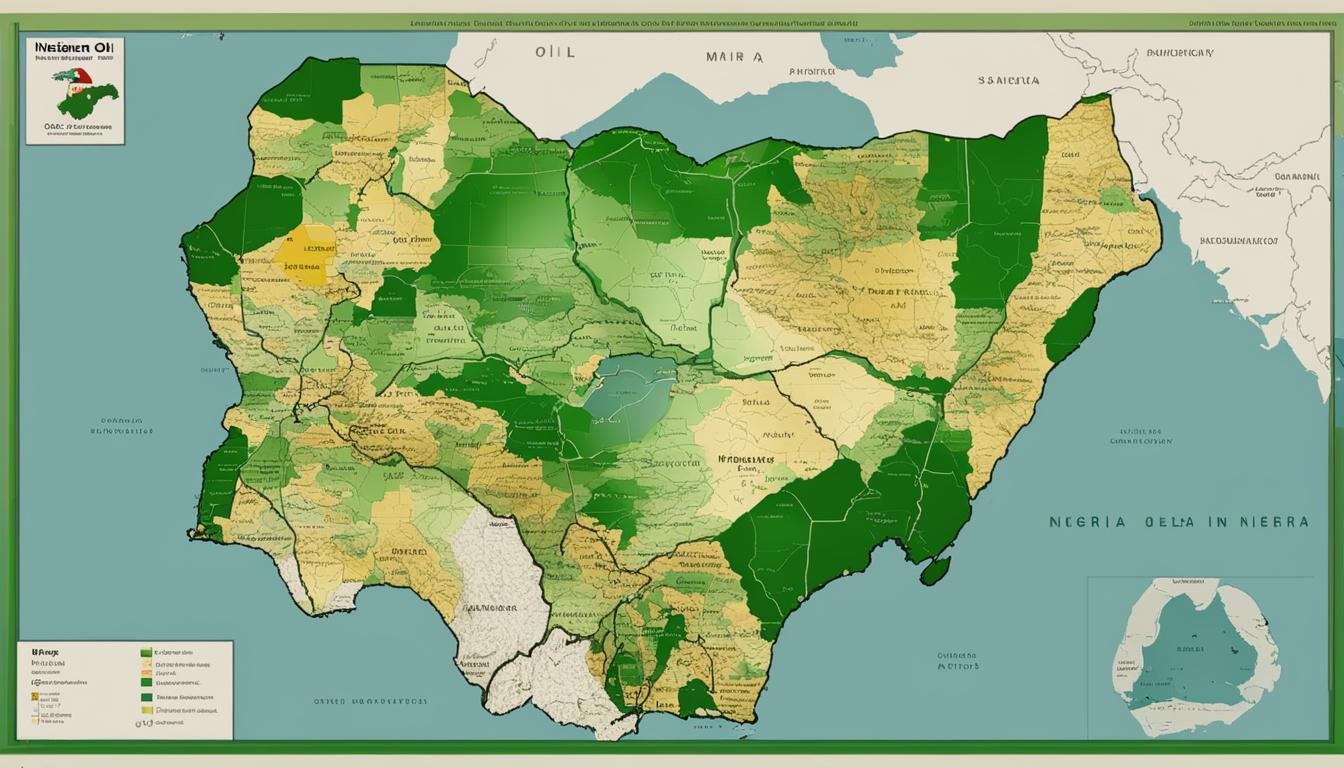North America is known to provide high-quality education to all its students, despite their gender. This article explores female education statistics in North America over the years.
Key Takeaways
- Between 2015 and 2021, more women earned a master’s degree than men in the US.
- By 2020-2021, there were far more women in the Science and Technology fields than men.
- According to a report by CBS News published as far back as April 2011, women had steadily surpassed males in the number of undergraduate and graduate degrees in the United States since the late 1970s.
- Women have steadily increased enrollments in higher education in North America from 1970 to 2020, with a slight decline observed from 1996 to 2000.
- In the United States of America, women represent the majority of college enrollments. According to Erudera, female college enrollment rates have increased dramatically since the 1970s, from 3,537,245 enrollments in 1970 to 11,274,609 enrollments in 2019.
Key Statistics
- According to Erudera, female college enrollment rates have increased dramatically since the 1970s, from 3,537,245 enrollments in 1970 to 11,274,609 enrollments in 2019.
- Data from WIAReport showed that 66.4% of women in the United States had earned a degree within 6 years (2015 to 2021) compared to 60.4% of men.
- A Statistics Canada report in November 2022 shows that 39.1% of STEM students were women, whereas 60.9% were men. There were more females in the Science and Technology field (58.8%) compared to 41.2% males.
- According to CEICData, 49.596% of female students were enrolled in secondary schools in the United Kingdom in 2015. The United States was just a little behind, with 49.172% of female pupils in secondary schools in 2015.
How the American Education system works?
Before we lay out the statistics relating to the female education system, we will briefly explain how the education system in North America is set up:
1. The United States of America
The American education system is one of the most diverse and flexible in the world. An article by USAHello states that public school education in the USA usually starts between ages 4 and 6 and continues until around age 17 to 18. The four levels of education are:
Preschool
Age: 2-5 years
Early childhood education includes learning that occurs before kindergarten. It is not mandated by law. Daycare and preschool are examples of early childhood education.
Elementary School Education
Grades: K-5 or 6
Age: 5-10
Elementary school provides basic education in reading, writing, math, science, social studies, problem-solving, and critical thinking.
Middle School (Junior High School)
Grade: 6-8
Age: 11-13
In junior school, students ripen their basic subjects concepts like English, Math, Science, and Social Studies.
High School
Grade: 9-12
Age: 14-18
The high school offers a variety of courses that allow students to mature their core skills and prepare for higher education. They learn critical analysis, algebra, history, and subjects like chemistry, physics, and biology.
Higher Education
Higher education in the U.S. refers to any post-secondary or post-high school education that leads to a degree or certificate. A college education is not free, but students can get scholarships to accommodate themselves.
Some of the most common types of higher education institutions in the U.S. that cater to the different needs and goals of students are:
- Community Colleges
These public institutions offer two-year associate degree programs that can be transferred to four-year colleges or universities or prepare students for immediate employment in specific fields.
- State Colleges and Universities
These are public institutions that state governments fund. They offer four-year bachelor’s degree programs and master’s and doctoral programs in various disciplines. They tend to be large and affordable for state residents.
- Private Colleges and Universities
Tuition fees, endowments, donations, grants, etc., fund these private institutions. They also offer four-year bachelor’s degree programs and master’s and doctoral programs in various disciplines.
2. Canada
Canada is renowned globally for its quality education at all levels. According to EduCanada, school is compulsory for children aged 6 years old to 18 years old.
Elementary School
Age: 5-12
Grades: 1-8
Classrooms are interactive and supportive, with innovative learning methods and technologies for a good learning experience.
High School
Ages: 13-18
Grades: 9-12
Canadian secondary schools prepare students for colleges and universities. According to the Organization for Economic Co-operation and Development, Canada has the 2nd highest high school completion rate worldwide.
Colleges and Vocational Schools
Colleges work closely with businesses and industries to provide students with a career-oriented experience along with academics.
Universities
These institutions range from intimate learning environments to research-intensive programs. They provide bachelor, master, and doctorate degrees equivalent to those in the U.S.
Overview of the History of Female Education in North America
The history of female education in North America is long and complex. Gale’s Women’s Studies Archive rehearsed that only a few girls were educated in the early nineteenth century.
Those who had the luxury of doing so, attended dame schools which started in the 18th century and focused on basic literacy. Education for girls became more common in the 1840s and 50s when the Common School Movement began. The females were then allowed to expand their education to town schools.
Likewise, in a report by CBS News published on April 26, 2011, women have steadily surpassed males in the number of undergraduate and graduate degrees in the United States since the late 1970s. 10.6 million adult U.S. women had master’s degrees in 2011 compared to 10.5 million men. Since then, women have steadily increased their share of higher education students.
Current Statistics
1. Enrollment Rates
North America
The Gross Enrollment Ratio (GER) is the ratio of total enrollment to the population of the official age group corresponding to the specific education level. The Net Enrollment Ratio (NER) is the ratio of enrolled children of official school age to the corresponding official school-age population.
The WorldBank, a renowned platform for global development data, has released GER and NER data for North American females enrolled in schools at all levels.
-
Primary
The overall gross percentage of females in primary schools in North America has remained high. It peaked in 1990 with a value of 106% but declined to 99% in 2013. The rates increased till 2019 before dropping again in 2020 to 100%.
Female Primary School Enrollment Trend in North America
Source: WorldBank
-
Secondary
The net rates for North American females in secondary schools vary greatly between 1990 and 2013. However, there has been a steady increase since then, reaching 94% in 2018.
Female Secondary School Net Enrollment Trend in North America
Source: WorldBank
-
Tertiary
The female GER in North America steadily increased from 1970 to 2020, with a slight decline observed from 1996 to 2000.
Female Tertiary Gross Enrollment Trend in North America
Source: WorldBank
A report by EducationData states that 65.2% of American women older than 25 have pursued higher education. Out of these, 50.4% of women have at least one degree.
The United States of America
CEICData is a global database that helps analysts and economists make sense of the world’s economy. It has set the standard for collecting data from all international markets since 1992. It has collected GER and NER data for females in the United States of America at all levels of education.
-
Primary
From the 1980s to 2015, the GER for females in primary schools peaked in 2008 and decreased till 2012, after which it has steadily risen.
Female Primary School Gross Enrollment Trend in The U.S.
Source: CEICData
The net enrollment rate for females in primary schools is quite similar. The rates decreased from 2008 to 2013 and have increased linearly since then.
Female Primary School Net Enrollment Trend in The U.S.
Source: CEICData
-
Secondary
In 2015, the female gross percentage for secondary schools was 97.698%, an increase from the previous rate of 96.379% in 2014.
Female Secondary School Net Enrollment Trends in the U.S.
Source: CEICData
According to The WorldBank, the net enrollment rate for females in secondary schools was around 92.6% in the U.S. The rate dropped to 92% the next year but jumped back to 93% in 2017.
Female Secondary School Net Enrollment Trend in The U.S.
Source: WorldBank
-
Tertiary
In the United States of America, women represent the majority of college enrollments. According to Erudera, female college enrollment rates have increased dramatically since the 1970s, from 3,537,245 enrollments in 1970 to 11,274,609 enrollments in 2019.
Another report by Erudera states that in community colleges, there was a 6% decline in female enrollments in 2021 compared to 2020. But, in public institutions with 4-year programs, the rates increased by 1% for females, which was around 44,000 more female students.
According to Education Data, the rate of female college attendance in the U.S. has almost doubled since 1947. Since 2000, the college enrollment rate among white females increased from 41% to 44%, whereas among Hispanic or Latina females, it increased from 25% to 41%. Black females had the lowest increase in college enrollment, from 35% to 40%.
Canada
Primary
- According to TradingEconomics, the net enrollment rate of females in primary schools was 99.57% in 2018.
- TheGlobalEconomy published a report showing the percentage of primary school enrollment in Canada. In recent years, the highest value recorded was 102.5% in 2015, whereas in 2019, the rate dropped to 101.
Percentage of Primary School Enrollment in Canada
Source: TheGlobalEconomy
Secondary
- Data from The WorldBank shows that the overall net female enrollment in secondary schools was considerably high from 2012 to 2017. There was a sharp increase from 93% in 2015 to 100% in 2016.
Female Secondary School Net Enrollment Trend in Canada
Source: WorldBank
- Statista released data showing the enrolment rates of public elementary and secondary schools in Canada from 2000 to 2021 by gender. The overall numbers for females were higher than for males each year. The values peaked in 2020 for each gender, with 2.56 for females and 2.42 million for males.
Enrollment in Public Elementary and Secondary Schools in Canada (by gender)
Source: Statista
Tertiary
- TradingEconomics reported that females’ gross tertiary school enrollment was 90.98% in 2020.
- According to Statista, around 1,219,340 females were enrolled in colleges or universities in 2020 compared to 951,650 men in the same year.
Enrollment in Postsecondary Institutions in Canada (by gender)
Source: Statista
2. Graduation Rates
According to a CBS News report in 2011, 10.2% of women have advanced degrees compared to 10.9% of men, but this gap has been steadily narrowing in recent years.
On the other hand, roughly 20.1 million women have bachelor’s degrees compared to nearly 18.7 million men. This gap of 1.4 million has remained steady in since 1996.
Data from WIAReport showed that 66.4% of women in the United States had earned a degree within 6 years (2015 to 2021) compared to 60.4% of men. The gender gap was even higher in private colleges and universities. Women had a 6.9% higher graduation rate than men.
Fields of Study Females are Graduating From Most and Least
A Statistics Canada report in November 2022 shows the proportion of male and female enrollments in post-secondary institutions in different fields.
- 39.1% of STEM students were women, whereas 60.9% were men. However, there were more females in the Science and Technology field (58.8%) compared to males (41.2%).
- There were overall more women than men in the Business, Arts, and Humanities fields (62.9%).
- In the healthcare sector, the percentage of women was 79.1%, higher than in any other field.
- 77.4% of the education and teaching field comprised females, compared to 22.6% of men.
Comparison with Other Regions
A country’s education quality depends greatly on its general economic status. In general, fully developed nations offer the best quality of education, whereas developing or underdeveloped countries tend to fall behind in this regard.
North America has a relatively well-developed public education system. In 2021, World Population Review published the rankings of the top ten countries based on the quality of education. The United States of America ranked 1st, whereas Canada ranked 4th.
However, Pew Research Center released a report in 2017 showing how American students need more academic progress than their foreign peers. The Programme for International Student Assessment (PISA) is one of the biggest cross-national assessments that measures reading ability, math, and science literacy among 15-year-olds every three years. The PISA results from 2015 show that the U.S. ranked 38 out of 71 countries in math and 24th in science.
Comparison of Female Education Statistics in North America with Other Regions
A report by UNICEF compared the Gender Parity Index (GPI) for primary enrollment (2012-2018) in countries worldwide. North America had reached gender parity (negligible difference in the ratio of female to male enrollment), unlike most countries in Africa, South Asia, and the Middle East. Girls were less privileged than boys in these regions in terms of education.
In Chad, the GPI value was 0.78, whereas, in Pakistan, it was 0.84. These were rather unimpressive values in front of the United States and Canada, where the GPI was 1.
European Union vs. The United States of America
Nation Master released education statistics comparing key data on the European Union and the United States at primary and secondary levels of education.
- 27.79 million pupils were enrolled in primary schools in Europe in 2011 compared to 24.43 million pupils in the United States, a difference of 14%.
- There were 31.24 million pupils in secondary education in the European Union, 29% more than the United States with 24.21 million.
- In 2011, 7,256 girls of official age were out of primary schools in the United Kingdom, compared to 780,465 girls in the U.S.
- The Gender Parity Index in 2010 was 1.41 in the United States, 2% more than in the U.K., where the GPI was 1.38.
According to CEIC Data, 49.596% of female students were enrolled in secondary schools in the United Kingdom in 2015. The United States was just a little behind, with 49.172% of female pupils in secondary schools in 2015.
Opportunities for Female Education in North America
North America is one of the most sought-out regions for international students. According to TopUniversities, over 1.1 million international students moved to the U.S. to study between 2019 and 2020.
1. World Renowned Institutions
The U.S. is home to some of the most prestigious universities in the world, namely Harvard University, Stanford University, and Massachusetts Institute of Technology. Each institute offers hundreds of programs with respectable teachers in every field.
2. Networking
Since America is the top choice for most international students, diversity is found in every classroom. Students interact with people from many countries and are introduced to other cultures worldwide.
American institutes have strong international connections for job placements for their students. They assign student mentors and have accessible student service offices to help students with visas, part-time jobs, and finances.
3. Vibrant Student Lifestyle
U.S. universities are known for providing students with a stimulating lifestyle. Students can join numerous sports teams, clubs, and sororities to balance their social life and academics.
Though the opportunities are endless in North American institutions, they also face numerous challenges that affect the quality of education.
Challenges for Female Education in North America
1. Racism
Racial disparities in education in North America have always been prominent. According to EdWeek, the racial breakdown of American public schools showed that almost half of the students were white (45.2%), 28.4% were Hispanic, 14.9% were Black, and 5.4% were Asian.
2. Student Poverty
According to Public School Review, more than half of the population in public schools in the United States consists of low-income students. 40% of public school students nationwide qualified for free or reduced lunch prices in around 40 states.
A Stanford University study shows that family income greatly affects student achievement measured by standardized tests.
3. The Language Barrier
North America has many foreign and international students in most of its classrooms. A major challenge the North American education system still needs to overcome is its inability to educate the growing population of students learning English for the first time. According to BushCenter, there has been a 42% increase in English Language Learners in Dallas over the past 6 years.
4. Lack of Funding
Funding from state and local governments has always been an issue in America. Lower funding means fewer teachers and fewer programs, leading to a decrease in the quality of education. According to CBPP, almost 90% of K-12 schools depend on these funds generated by sales and income taxes. However, funding has remained the same in many states. In fact, most regions are issued funding that is lower than before the Great Recession.
5. Safety Issues
The number of mass shootings in American schools has increased over the years, raising questions about school safety. A Pew Research Center survey showed that over 50% of teenage students were worried about gun violence in school.
Bullying is another issue that has become a norm in American schools. A Public School Review article showed that the number of suicides for students in American schools could be directly traced to bullying events. Cyberbullying is also a rising issue, with technology becoming more accessible to bullies.
6. A Lack of Teachers
According to Public School Review, teachers’ salaries have steadily decreased in most states in America over the past few years. The average salary for public elementary and secondary teachers dropped by nearly 5% from 2010 till now. In other states like Oklahoma, there was a 17% decrease, and many teachers resigned.
7. Gender Bias
Gender bias within classrooms directly affects girls’ ambitions and self-perceptions in society. As WorldBank states, gender stereotypes in classroom learning environments and staff behavior greatly impacts a girl’s academic performance and choice of field of study.
8. Child Marriage
Girls who marry young are more likely to drop out of school instead of completing their education, according to the World Bank. A recent report shows that 41,000 underage girls in North America marry every day.
In the U.S., increasing female education has boosted gender equality in domestic and work life. A Brookings essay proves that girls’ education can be cited as the world’s best investment once these challenges are overcome. Educating females will increase economic opportunity and wages and decrease pregnancy rates and early marriages.
FAQs
When were girls allowed to go to school in the U.S.?
In 1803, Branford Academy was the first higher educational institute to admit women in Massachusetts. Initially, it was a co-educational institution but became exclusive for girls in 1837.
Are there girls-only schools in America?
Yes, many private colleges in the U.S. only admit females.
What is the largest all-girl school in America?
The Mother McAuley Liberal Arts High School in Chicago is the largest all-girl school in America.
How many female-only colleges are there in America?
According to Wikipedia, there are 35 women’s colleges in the U.S. as of 2021.
Is education in America free?
According to USAHello, public schools are free of cost in the U.S.
Conclusion
Female enrolment rates in North America have been relatively high and have increased over the past few years. More females are enrolling in private institutions than in public ones.
Racism and bullying are key challenges faced by North American students, along with poverty, lack of funding, and the language barrier. However, North America offers many opportunities with world-renowned institutions and high-quality education.
Overcoming these challenges and investing in girls’ education in North America will drastically improve its economic standing. Empowered women will result in healthier families and more stable economies.
![Female Education Statistics in North America [100%Updated] 1 Female Education Statistics in North America](https://zoets.b-cdn.net/wp-content/uploads/2023/09/pexels-karolina-grabowska-8106679-scaled-e1695133179364.jpg)
![Female Education Statistics in North America [100%Updated] 2 How the American Education system works Before we lay out the statistics relating to the female education system, we will briefly explain how the education system in North America is set up. The United States of America The American education system is one of the most diverse and flexible in the world. An article by USAHello states that public school education in the USA usually starts between ages 4 and 6 and continues until around age 17 to 18. The four levels of education are: Preschool Age: 2-5 years Early childhood education includes learning that occurs before kindergarten. It is not mandated by law. Daycare and preschool are examples of early childhood education. Elementary School Education Grades: K-5 or 6 Age: 5-10 Elementary school provides basic education in reading, writing, math, science, social studies, problem-solving, and critical thinking. Middle School (Junior High School) Grade: 6-8 Age: 11-13 In junior school, students ripen their basic subjects concepts like English, Math, Science, and Social Studies. High School Grade: 9-12 Age: 14-18 The high school offers a variety of courses that allow students to mature their core skills and prepare for higher education. They learn critical analysis, algebra, history, and subjects like chemistry, physics, and biology. Higher Education Higher education in the U.S. refers to any post-secondary or post-high school education that leads to a degree or certificate. A college education is not free, but students can get scholarships to accommodate themselves. Some of the most common types of higher education institutions in the U.S. that cater to the different needs and goals of students are: 1. Community Colleges These public institutions offer two-year associate degree programs that can be transferred to four-year colleges or universities or prepare students for immediate employment in specific fields. 2. State Colleges and Universities These are public institutions that state governments fund. They offer four-year bachelor's degree programs and master's and doctoral programs in various disciplines. They tend to be large and affordable for state residents. 3. Private Colleges and Universities Tuition fees, endowments, donations, grants, etc., fund these private institutions. They also offer four-year bachelor's degree programs and master's and doctoral programs in various disciplines. Canada Canada is renowned globally for its quality education at all levels. According to EduCanada, school is compulsory for children aged 6 years old to 18 years old. Elementary School Age: 5-12 Grades: 1-8 Classrooms are interactive and supportive, with innovative learning methods and technologies for a good learning experience. High School Ages: 13-18 Grades: 9-12 Canadian secondary schools prepare students for colleges and universities. According to the Organization for Economic Co-operation and Development, Canada has the 2nd highest high school completion rate worldwide. Colleges and Vocational Schools Colleges work closely with businesses and industries to provide students with a career-oriented experience along with academics. Universities These institutions range from intimate learning environments to research-intensive programs. They provide bachelor, master, and doctorate degrees equivalent to those in the U.S.](https://zoets.b-cdn.net/wp-content/uploads/2023/09/How-the-American-Education-system-works.jpg)
![Female Education Statistics in North America [100%Updated] 3 How the American Education system works in canada](https://zoets.b-cdn.net/wp-content/uploads/2023/09/How-the-American-Education-system-works-in-canada.jpg)
![Female Education Statistics in North America [100%Updated] 4 Female Primary School Enrollment Trend in North America](https://zoets.b-cdn.net/wp-content/uploads/2023/09/Female-Primary-School-Enrollment-Trend-in-North-America.jpg)
![Female Education Statistics in North America [100%Updated] 5 Female Secondary School Net Enrollment Trend in North America](https://zoets.b-cdn.net/wp-content/uploads/2023/09/Female-Secondary-School-Net-Enrollment-Trend-in-North-America.jpg)
![Female Education Statistics in North America [100%Updated] 6 Female Tertiary Gross Enrollment Trend in North America](https://zoets.b-cdn.net/wp-content/uploads/2023/09/Female-Tertiary-Gross-Enrollment-Trend-in-North-America.jpg)
![Female Education Statistics in North America [100%Updated] 7 Female Primary School Gross Enrollment Trend in The U.S.](https://zoets.b-cdn.net/wp-content/uploads/2023/09/Female-Primary-School-Gross-Enrollment-Trend-in-The-U.S.jpg)
![Female Education Statistics in North America [100%Updated] 8 Female Primary School Net Enrollment Trend in The U.S.](https://zoets.b-cdn.net/wp-content/uploads/2023/09/Female-Primary-School-Net-Enrollment-Trend-in-The-U.S.jpg)
![Female Education Statistics in North America [100%Updated] 9 Female Secondary School Net Enrollment Trends in the U.S.](https://zoets.b-cdn.net/wp-content/uploads/2023/09/Female-Secondary-School-Net-Enrollment-Trends-in-the-U.S.jpg)
![Female Education Statistics in North America [100%Updated] 10 Female Secondary School Net Enrollment Trend in The U.S.](https://zoets.b-cdn.net/wp-content/uploads/2023/09/Female-Secondary-School-Net-Enrollment-Trend-in-The-U.S.jpg)
![Female Education Statistics in North America [100%Updated] 11 Percentage of Primary School Enrollment in Canada](https://zoets.b-cdn.net/wp-content/uploads/2023/09/Percentage-of-Primary-School-Enrollment-in-Canada.jpg)
![Female Education Statistics in North America [100%Updated] 12 Female Secondary School Net Enrollment Trend in Canada](https://zoets.b-cdn.net/wp-content/uploads/2023/09/Female-Secondary-School-Net-Enrollment-Trend-in-Canada.jpg)
![Female Education Statistics in North America [100%Updated] 13 Enrollment in Public Elementary and Secondary Schools in Canada (by gender)](https://zoets.b-cdn.net/wp-content/uploads/2023/09/Enrollment-in-Public-Elementary-and-Secondary-Schools-in-Canada-by-gender.jpg)
![Female Education Statistics in North America [100%Updated] 14 Enrollment in Postsecondary Institutions in Canada (by gender)](https://zoets.b-cdn.net/wp-content/uploads/2023/09/Enrollment-in-Postsecondary-Institutions-in-Canada-by-gender.jpg)
![Female Education Statistics in North America [100%Updated] 15 Fields of Study Females are Graduating From Most and Least](https://zoets.b-cdn.net/wp-content/uploads/2023/09/Fields-of-Study-Females-are-Graduating-From-Most-and-Least.jpg)








![Education and Skills Gap Statistics in the US [3 FAQs] 24 Education and Skills Gap Statistics in the US](https://zoets.b-cdn.net/wp-content/uploads/2024/01/pexels-kai-pilger-414530-scaled-e1704203026801.jpg)